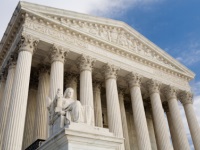
Resolving a split among the circuits, the U.S. Supreme Court held that a “supervisor” for Title VII harassment liability is limited to those who have the power to take a tangible employment action against the alleged victim (e.g., hire, fire, demote, promote, transfer, or discipline). Merely overseeing and directing the alleged victim’s daily work is insufficient to meet this heightened standard.
Pursuant to the Court’s holdings in Faragher v. City of Boca Raton, 524 U.S. 775 (1998), and Burlington Industries, Inc. v. Ellerth, 524 U.S. 742 (1998), employers may be held vicariously liable for harassment by “supervisors” of the alleged victim. If the alleged harasser is simply a co-worker, the employer is only liable if it was negligent in controlling working conditions.
In Vance v. Ball State University, No. 11-556 (June 24, 2013), plaintiff alleged that she was the victim of a racially hostile work environment created by an employee, whom plaintiff alleges was her supervisor, despite the fact that the alleged harasser did not have the power to hire, fire, demote, promote, transfer, or discipline plaintiff.
The trial court granted summary judgment in favor of the employer, finding that, because the alleged harasser did not have the power to take tangible employment actions against plaintiff, she was not a “supervisor.” In affirming this decision, the Seventh Circuit joined the First and Eighth Circuits, who had also held that that the definition of “supervisor” is limited to employees who have the power to “hire, fire, demote, promote, transfer, or discipline” the alleged victim. The Second, Fourth and Ninth Circuits had adopted the more “open-ended approach advocated by the EEOC’s Enforcement Guidance, which ties supervisor status to the ability to exercise significant direction over another’s daily work.” Id. at 9.
In a 5-4 decision, the Court affirmed the decision of the Seventh Circuit and held that, for Title VII harassment liability, a supervisor is one who has the power to take a tangible employment action against the plaintiff. The decision resolves the split among the circuits as to who is a “supervisor” for purposes of Title VII harassment liability. The Court reasoned that because the term “supervisor” is not a statutorily defined concept, “the way to understand the meaning of the term ‘supervisor’ for present purposes is to consider the interpretation that best fits within the highly structured framework that [Faragher and Ellerth] adopted.” Id. at 14. Upon review of the Faragher and Ellerth decisions it is clear that they “contemplate a unitary category of supervisors. . . There is no hint in either decision that the Court had in mind two categories of supervisors: first, those who have such authority and, second, those who, although lacking this power, nevertheless have the ability to direct a co-workers’ labor to some ill-defined degree.” Id. at 10. Notably, the Court refused to give deference to the EEOC’s Enforcement Guidance definition, finding it “a study in ambiguity.”
The Court’s ruling simplifies the issues that must be decided by a jury as the determination of whether an employee is a supervisor “can very often be resolved as a matter of law before trial.” Id. at 22. In addition, because the Court expressly rejected the EEOC’s Enforcement Guidance, the agency will now have to issue new guidance that is consistent with the Court’s ruling.

